Senate Finance Committee Approves $12,500 EV Tax Credit Bill

On Wednesday, the Senate Finance Committee advanced the Clean Energy for America Act making a few tweaks from earlier proposals. Changes include raising the federal EV tax rebate ceiling to $12,500 and opening the door for automakers who already exhausted their production quotas.
It’s good news for General Motors, which recently begged the government for just such a handout. But any manufacturer participating in the sale of electric vehicles will find themselves similarly blessed by the updated rules — assuming they make it through the halls of Capitol Hill with the necessary support.
Let’s take a peek behind the curtain to see what the updated proposal entails.
While the $7,500 tax credit persists, the bill now adds special exemptions depending on how the vehicle is manufactured For example, the government will tack on another $2,500 if final assembly takes place inside the United States and another $2,500 if the factory in question happens to be represented by a union. While the latter inclusion seems concerningly political, there doesn’t appear to be any language stipulating whether not it matters if unionized plants have to be located in the country for the vehicle to be eligible.
It’s also probably one of the biggest reasons why the committee advanced the legislation on a tie split evenly (14-14) along party allegiances. But the rules say the bill only gets the kibosh if it loses the vote, so the deadlock still means it can be sent all the way to the Senate. But some of the particulars might make its pathway there incredibly difficult.
Perhaps the most fiscally irresponsible aspect of the proposal involves ending any caps on vehicle production. Early incarnations of the EV tax credit were intended only to get the ball rolling on alternative energy vehicles, so they would gain public acceptance. But the Clean Energy for America Act will continue issuing credits until electric vehicles become over half of a company’s annual sales. Even then, there will be a phase-out period where rebates would be scaled back over two years — similar to how things work under the current rules.
This is an insane amount of money for any government to effectively hand over to automotive manufacturers with no definitive end date. We have no real way of knowing when EVs will supplant the internal combustion engine as the dominant powertrain. These subsidies could last for decades, extending well beyond the point where electrically driven cars reach financial parity with ICEs. They also won’t be linked to the Biden infrastructure plan, which is striving to create $100 billion in additional rebates for electric cars.
Let’s not forget all this money is supposed to be coming from America’s tax base and there’s literally no way to even begin estimating what the total cost will be.
The Clean Energy for America Act basically throws any notion of there being a free auto market out the window. It incentives the building and purchase of EVs to such a degree that there would be little reason to continue pursuing gasoline or diesel development. Even they were suddenly proven to be better for the environment or consumers than plug-ins, the payout for running with EVs would still be far too big to ignore. I believe the correct term for this is a “planned economy,” as it technically shapes/restrains existing consumer demand in favor of greater capital investments for economic development in a manner that suits government goals.
In fact, the only aspect of the proposal that seems to exercise any financial restraint is the MSRP eligibility limit of $80,000. This is designed to prohibit wealthy individuals from taking advantage of the federal tax credits. However, most high-end electrics currently on the market already come in below the cutoff — including the Porsche Taycan and Tesla Model S.
[Image: Nmorguelan/Shutterstock]

A staunch consumer advocate tracking industry trends and regulation. Before joining TTAC, Matt spent a decade working for marketing and research firms based in NYC. Clients included several of the world’s largest automakers, global tire brands, and aftermarket part suppliers. Dissatisfied with the corporate world and resentful of having to wear suits everyday, he pivoted to writing about cars. Since then, that man has become an ardent supporter of the right-to-repair movement, been interviewed on the auto industry by national radio broadcasts, driven more rental cars than anyone ever should, participated in amateur rallying events, and received the requisite minimum training as sanctioned by the SCCA. Handy with a wrench, Matt grew up surrounded by Detroit auto workers and managed to get a pizza delivery job before he was legally eligible. He later found himself driving box trucks through Manhattan, guaranteeing future sympathy for actual truckers. He continues to conduct research pertaining to the automotive sector as an independent contractor and has since moved back to his native Michigan, closer to where the cars are born. A contrarian, Matt claims to prefer understeer — stating that front and all-wheel drive vehicles cater best to his driving style.
More by Matt Posky
Latest Car Reviews
Read moreLatest Product Reviews
Read moreRecent Comments
- Redapple2 Cadillac, Acura and Infiniti have very tough rows to hoe.
- Redapple2 First question: How do you define Sales Success?1 they ve lost more than 35% of all dealers in the last 5 years.2 transition to BEV will cost Billions. No money for new designs3 cars for #2 above have already been designed in BEV form and wont be redone significantly for - what- 10 years? 3b-Lyric and whatever its called are medusa level ugly. How could this design theme be fuglier than arts and science? Evil gm did though4 the market is poisoned. 1/3 of folks with $ would never consider one/ridicule the product. Under 40 yr olds dont even know the brand exists.It is dead and doesn't know it. Like a Vampire.
- Redapple2 Focus and Fiesta are better than Golf? (overall?) I liked the rentals I had. I would pick these over a Malibu even though it was a step down in class and the rental co would not reduce price.
- Teddyc73 Oh good lord here we go again criticizing Cadillac for alphanumeric names. It's the same old tired ridiculous argument, and it makes absolutely no sense. Explain to me why alphanumeric names are fine for every other luxury brand....except Cadillac. What young well-off buyer is walking around thinking "Wow, Cadillac is a luxury brand but I thought they had interesting names?" No one. Cadillac's designations don't make sense? And other brands do? Come on.
- Flashindapan Emergency mid year refresh of all Cadillac models by graphing on plastic fenders and making them larger than anything from Stellantis or Ford.
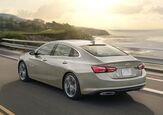























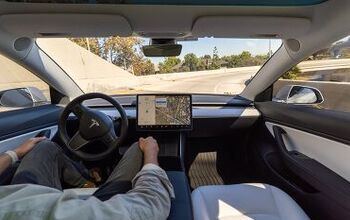
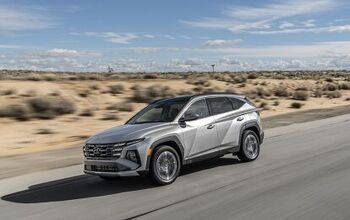

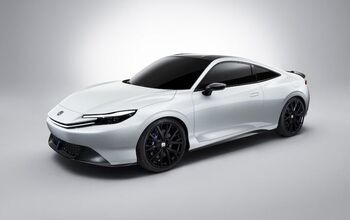


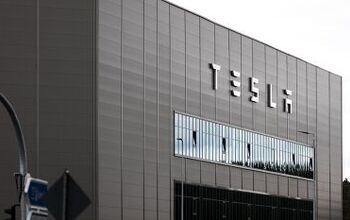
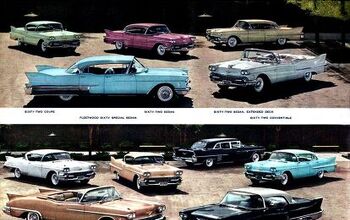


Comments
Join the conversation
slavuta, Please don't tell me they bought Joey B's money printing press.
Electric cars, especially Tesla vehicles are definitely superior to Gas powered cars. There's a reason why Tesla sales have been DOUBLING every single year for the past 10 years. I can easily see Tesla going from 500K sales last year to over a Million sales this year WITH OR WITHOUT this incentive. As for reaching parity, there's already parity when the Tesla Model 3 costs less to own over 5 years than a Toyota Camry. Why? No need to worry about Gas every day, Oil Changes every 3 months, Brakes every year and so on and so forth. This rebate is unnecessary and it's unlikely that Tesla will be able to more than double annual sales. What they really should do is end subsidies to Oil companies and refineries. End subsidies for Ethanol and other fuel additives.